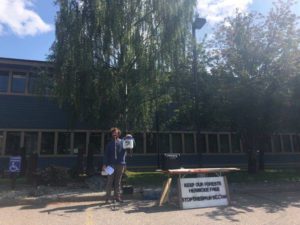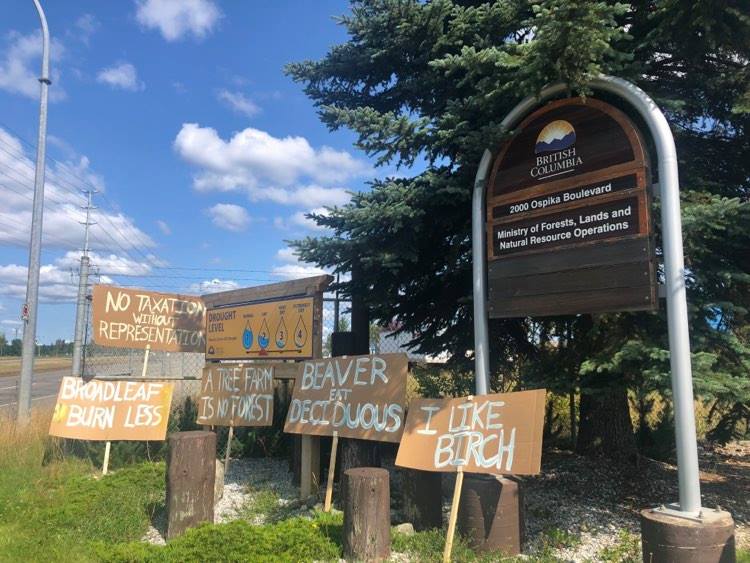Around 50 residents gathered at the Ministry of Forests, Lands, and Resource Operations building to protest the lack of transparency from the provincial government when it comes to Glyphosate and other Herbicide sprayings in BC.
James Steidle with Stop the Spray BC says the current public notification system is outdated, as residents are only updated through newspapers once every five years when the provincial pest management plan is renewed.
He says the plan is a vague blanket authorization for spraying cutblocks across BC with no specific maps or details on where the spraying will occur.

“We did the rally to get them to tell us where they’re going to spray because they don’t tell us that. They should have a map showing all of the public areas on our public forests where they’re going to spray this year so that we can avoid those areas if we’re berry picking because of the contamination we’re learning about,” he explained.
Currently, there is no legal requirement for the government or industry to inform the public of what cutblocks will be getting sprayed or when.
Steidle adds he’s heard from one local First Nations official that community members have complained about having numb lips after eating berries picked from areas previously sprayed.
Additionally, he referred to an incident in 2016 when a Buckhorn woman was sprayed by a helicopter while riding her horse one evening.
Participants also shared concerns over the impact that Glyphosate spraying has on wildlife in the area, and adds it will only add to the declining Moose population.
“Also for people from the Lower Mainland heading up here for a hunting trip they don’t want to go to areas that are going to get sprayed, and if you’re an activist or scientist and you want to document these areas that are getting sprayed you should know because this is our money that’s being used on our public forests,” Steidle added.
Steidle notes that this isn’t a new issue and that they’ve always protested the use of Glyphosate in the forestry industry.
In 2020, Stop the Spray held a protest to oppose Canfor’s 5-year-request for blanket authorization of spraying their crown land cutblocks.
According to Steidle, Canfor did not reach out to the group to discuss the topic and the BC Government approved the request not long afterward.
Now, Canfor has plans to spray around 3,000 hectares of land in the Upper Fraser area in the upcoming few weeks, however, Steidle is still unaware of the exact area that it will take place in.
During the protest, participants also reiterated their opposition to the Monocrop Tree farm model, which according to Steidle, removes fire-resistant deciduous trees from regenerating through many areas of the Central Interior.
“This has directly made our forests more flammable (Aspen are exponentially more fire-resistant than conifer). It has made them less diverse. It has made them less capable of sequestering carbon (aspen and birch can sequester up to 400% more carbon than conifer). It has also made them darker in tone meaning our conifer forests absorb more sunlight and heat than lighter-toned deciduous forests. And we have spent hundreds of millions of dollars in today’s currency, doing this to over 1.4 million hectares of forest, over the past 40 years,” added Steidle.
He says the model is “completely insane” and disrespectful to every BC resident who has property at risk of fire as a result of it.
Something going on in the Prince George area you think people should know about?
Send us a news tip by emailing [email protected].






